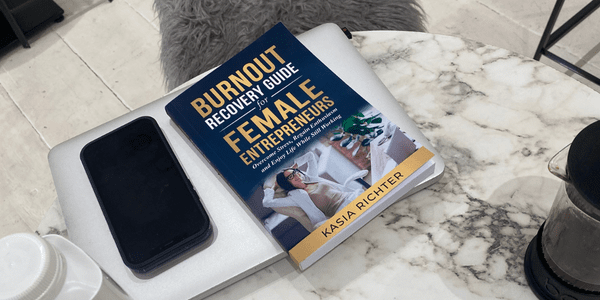In today’s fast-paced world, where the demands of work and life can often feel overwhelming, burnout has become a pressing concern. The symptoms of burnout, often characterised by exhaustion, cynicism, and reduced professional efficacy, have gained increasing recognition in recent years. The prevalence of stress and burnout is not only a matter of concern for individuals but also for organisations and societies as a whole.
The consequences of burnout extend far beyond the workplace. This blog post explores the multifaceted impact of burnout on various aspects of life, including physical health, psychological well-being, and occupational consequences. We delve into how burnout can affect your physical and mental health, leading to conditions like depression. Furthermore, we discuss the rising rates of burnout and the increased risk of developing this debilitating state in our modern world.
Join us as we unravel the layers of burnout, examining its implications and offering insights into understanding and dealing with this prevalent issue. Whether you’re an individual seeking to recognize the signs of burnout or an organisation looking to support employee well-being, this exploration into the impact of burnout will shed light on a topic that affects us all. Let’s embark on a journey to understand the intricacies of burnout and the measures that can be taken to mitigate its effects.
Table of Contents
Understanding Burnout
Burnout is a complex phenomenon with a wide-reaching impact on individuals and their well-being. To truly grasp the nature of burnout, we must explore its underlying causes, differentiate between job-specific and general manifestations, and recognize the close connection between stress and burnout.
Causes of Burnout:
The causes of burnout can be attributed to a variety of factors, both within and outside the workplace. A systematic review of research studies has highlighted that burnout isn’t solely tied to one’s job; rather, it emerges from a blend of circumstances and influences. These contributing factors include:
- Work-related factors: The demands and pressures of the workplace can significantly contribute to burnout. These factors may include excessive workloads, tight deadlines, insufficient control over one’s tasks, and the weight of responsibility. Occupational stress, arising from these challenges, plays a pivotal role in the development of burnout.
- Personal factors: Burnout isn’t an isolated issue; personal aspects of an individual’s life can also be influential. Those with perfectionistic tendencies, a limited capacity to cope with stress, or a history of mental health concerns may be more susceptible to burnout. Additionally, external life stressors such as relationship difficulties or financial burdens can exacerbate the risk of burnout.
Job Burnout vs. General Burnout:
It’s essential to distinguish between job-specific burnout and a broader, more generalised form of burnout:
- Job Burnout: This form of burnout primarily stems from work-related stressors and manifests as exhaustion, cynicism, and reduced professional efficacy. It directly pertains to the challenges and pressures encountered in the workplace.
- General Burnout: In contrast, general burnout encompasses the broader impact of burnout on an individual’s life. It extends beyond one’s job and can affect various facets of daily living, including personal relationships, leisure activities, and overall well-being.
The Link Between Stress and Burnout:
Stress and burnout are closely intertwined, often feeding into each other. Stressors originating from both professional and personal domains can contribute to the development of burnout. Moreover, the experience of burnout can intensify the stress experienced by an individual, creating a challenging cycle that can be difficult to break. Understanding the relationship between stress and burnout is crucial for effectively addressing both issues.
In the upcoming sections of this blog post, we will delve deeper into the signs and symptoms of burnout, explore its extensive impact on physical and mental health, discuss practical strategies for dealing with burnout, and emphasise the importance of achieving balance in life. By comprehending the causes and characteristics of burnout, individuals and organisations can take proactive measures to prevent its occurrence and promote overall well-being.

Signs and Symptoms of Burnout
Burnout is a complex and insidious condition that often creeps into one’s life without warning. To effectively address and combat burnout, it’s crucial to recognize its signs and symptoms across various dimensions, including physical, emotional, behavioural, and cognitive aspects.
Physical Symptoms:
Physical manifestations of burnout can be insidious and may include:
Chronic Fatigue: A persistent and overwhelming sense of tiredness that isn’t alleviated by rest is a common physical symptom of burnout. It can affect an individual’s ability to function optimally in daily life.
Headaches and Muscle Pain: Burnout can contribute to increased tension and physical discomfort, leading to headaches and muscle pain.
Sleep Disturbances: Individuals experiencing burnout may have difficulty falling asleep, staying asleep, or waking up feeling refreshed. This can further exacerbate feelings of exhaustion.
Emotional Symptoms:
The emotional toll of burnout is profound and includes:
Emotional Exhaustion: Individuals may feel emotionally drained, as if they’ve used up their emotional resources. This can lead to feelings of numbness or emptiness.
Cynicism and Detachment: A sense of cynicism or detachment from work or life in general is a common emotional symptom. Individuals may become pessimistic and develop a negative attitude towards their responsibilities.
Reduced Personal Accomplishment: Burnout can lead to a diminished sense of personal accomplishment, with individuals feeling that their efforts yield little or no meaningful results.
Behavioural Symptoms: Burnout often affects an individual’s behaviour, leading to:
Withdrawal: Individuals may withdraw from social interactions, both at work and in their personal lives. They may isolate themselves, further intensifying their sense of loneliness.
Procrastination and Decreased Productivity: Burnout can hinder an individual’s ability to complete tasks efficiently, leading to procrastination and decreased productivity.
Increased Irritability: Individuals suffering from burnout may become more irritable and may react negatively to minor stressors.

Cognitive Symptoms:
Cognitive symptoms of burnout can impact an individual’s thought processes and decision-making abilities:
Reduced Concentration: Burnout can make it challenging to focus on tasks or maintain attention for extended periods.
Memory Problems: Individuals may experience memory lapses or difficulties in recalling information.
Negative Self-Perception: Burnout can lead to a negative self-perception, with individuals doubting their abilities and self-worth.
Recognizing the signs of burnout is essential, as it can have significant psychological and occupational consequences. Signs of chronic stress and emotional and physical exhaustion are key indicators that burnout may be affecting various areas of your life. These warning signs should not be ignored, as addressing burnout and seeking support are crucial steps towards achieving a healthier and more balanced life. In the subsequent sections of this blog post, we will further explore the impact of burnout and discuss strategies for dealing with it effectively.
The Impact of Burnout
Burnout is a pervasive issue that extends its reach into various aspects of an individual’s life, leaving a profound impact that cannot be underestimated. Let’s explore the consequences of burnout in terms of health, work performance, relationships, and long-term well-being.
Health Consequences:
The repercussions of burnout on an individual’s health are extensive. Occupational consequences of job burnout can lead to both physical and mental health conditions. Burnout can:
- Affect Your Physical and Mental Health: Burnout takes a toll on an individual’s physical and mental well-being, potentially leading to conditions such as anxiety, depression, and cardiovascular problems.
- Lead to Health Conditions: Chronic stress resulting from burnout can contribute to the development of health conditions like hypertension, diabetes, and obesity.
- Be Exacerbated by Work-Related Stress: The workplace environment, characterised by high demands and low control, often contributes significantly to burnout. Addressing work-related stress is crucial in mitigating these health consequences.
Effects on Work Performance:
Burnout’s impact on an individual’s professional life can be substantial:
- Reduced Productivity: Burnout can lead to decreased productivity as individuals struggling with exhaustion and detachment find it challenging to perform at their best.
- Increased Absenteeism: Individuals with burnout may take more sick leave due to physical and mental health issues, further impacting their work and their organisation.
- Quality of Work: Burnout can affect the quality of work, with individuals feeling less motivated and engaged in their tasks, potentially leading to errors and diminished outcomes.
Impact on Relationships:
Burnout isn’t confined to the workplace; it affects personal relationships as well:
- Strained Relationships: Burnout can strain relationships with family and friends, as individuals may withdraw socially and struggle to engage in meaningful interactions.
- Communication Difficulties: Burnout can lead to communication difficulties, as individuals may become irritable, detached, or emotionally unavailable.
- Reduced Empathy: A sense of emotional depletion can result in reduced empathy and understanding, further straining relationships.
- Long-Term Consequences: Failure to address burnout can have lasting implications:
- Increased Risk of Developing Chronic Conditions: Prolonged exposure to burnout can increase the risk of developing chronic physical and mental health conditions.
- Career Implications: Burnout may affect an individual’s career trajectory, potentially impacting advancement and job satisfaction.
- Overall Well-Being: The impact of burnout extends beyond the immediate present, influencing one’s overall well-being and life satisfaction.
Recognising burnout’s pervasive impact is the first step toward addressing this issue effectively. In the following section, we will explore strategies for dealing with burnout, emphasising the importance of prevention, self-care, and seeking professional help.

Dealing with Burnout
Burnout is a serious issue that demands proactive attention and effective strategies for coping. Let’s delve into the ways individuals can deal with burnout, covering prevention strategies, self-care, and seeking professional help.z
Prevention Strategies:
Preventing burnout is crucial, and it involves:
Stress Management: Developing effective stress management techniques can help individuals cope with the demands of work and life.
Setting Boundaries: Establishing clear boundaries between work and personal life is essential in preventing burnout.
Time Management: Efficient time management can reduce the risk of burnout by ensuring tasks and responsibilities are manageable.
Self-Care and Burnout:
Engaging in self-care practices can be instrumental in addressing burnout:
Physical and Mental Well-Being: Prioritising physical exercise, proper nutrition, and adequate sleep can contribute to better physical and mental health.
Recognizing Burnout: Being able to recognize the signs and symptoms of burnout is crucial for self-care. Individuals must be proactive in addressing these symptoms when they arise.
Emotional and Physical Exhaustion: Self-care should focus on addressing emotional and physical exhaustion through relaxation techniques and mindfulness.
Seeking Professional Help:
In some cases, burnout may require professional intervention:
Recognize Burnout: Individuals should recognize when burnout is beyond their capacity to manage independently and be willing to seek help.
Emotional Support: Seeking support from friends, family, or a counsellor can provide emotional support during challenging times.
Job Performance: Addressing burnout may also involve discussing the issue with employers or supervisors to seek accommodations or adjustments in the workplace.
Dealing with burnout is a multi-faceted process that involves recognizing the symptoms, implementing self-care practices, and seeking help when needed. By taking these proactive steps, individuals can effectively manage burnout and regain their sense of well-being and balance.

Finding Balance in Your Life
In the hustle and bustle of modern life, finding balance is often an overlooked necessity for overall well-being. Let’s explore the significance of work-life balance, effective strategies to achieve it, and the importance of setting boundaries.
Importance of Work-Life Balance:
Achieving balance in your life is not a luxury; it’s a fundamental component of maintaining physical and mental health. Here’s why it’s essential:
Time to Pause and Change: Balancing work and personal life allows you to pause and change gears. It provides an opportunity to recharge and transition between different aspects of your life.
Pause and Change Direction: Balance enables you to step back and re-evaluate your priorities, allowing you to change direction when necessary.
Change Direction by Learning: Learning how you can help yourself overcome burnout and recognizing when adjustments are needed is facilitated by a balanced lifestyle.
Strategies for Achieving Balance:
Striking the right balance in life requires intentional effort and effective strategies:
Prioritisation: Identify your priorities and allocate time accordingly. Determine what matters most in both your work and personal life.
Time Management: Effective time management techniques, such as setting clear goals and organising tasks, can help you make the most of your time.
Self-Care: Don’t underestimate the importance of self-care. Engage in activities that promote physical and mental well-being.
Boundaries: Establishing boundaries is crucial. Learn to say no when necessary and set limits on work-related demands that can encroach on your personal life.

Setting Boundaries:
Setting boundaries is a key component of maintaining work-life balance:
Define Your Limits: Clearly define your personal and professional boundaries. Communicate these boundaries to colleagues, friends, and family.
Learn to Say No: It’s okay to decline additional work or commitments when they jeopardise your balance.
Regular Check-Ins: Periodically assess your boundaries to ensure they align with your current priorities and needs.
By striving for balance in your life, you create space for personal growth, happiness, and overall well-being. In the next section, we’ll explore a program designed to address one of the most challenging aspects of maintaining balance: executive burnout.

The Happy CEO Program: A Solution for Executive Burnout
The relentless demands of leadership roles can lead to job burnout and risk the well-being of executives. The Happy CEO Program offers a promising solution to this challenge, with a focus on stress reduction, improved mental health, and enhanced leadership skills.
What is the Happy CEO Program?
The Happy CEO Executive Burnout Program is a tailored approach designed to address the unique needs of executives who may be at risk of burnout. It offers a comprehensive framework for achieving work-life balance and enhancing overall well-being.
Benefits of the Happy CEO Program:
Executives who participate in the Happy CEO Program can expect a range of benefits, including:
Stress Reduction: The program provides practical tools and strategies to reduce stress levels, enabling executives to manage the demands of their roles more effectively.
Improved Mental Health: By addressing the psychological and occupational consequences of job burnout, the program supports executives in maintaining their mental well-being.
Enhanced Leadership Skills: The Happy CEO Program recognizes that effective leadership goes hand in hand with personal well-being. It empowers executives to lead with clarity, empathy, and resilience.
In the corporate world, where the pressure to perform is high, the Happy CEO Program stands out as a valuable resource for those seeking to maintain their equilibrium and lead with both success and well-being in mind.

Conclusion
In this exploration of burnout and the innovative approach offered by the Happy CEO Program, we have uncovered critical insights into the profound effects of burnout, the imperative of addressing it, and the transformative potential of specialised solutions.
Recap of Burnout and Its Effects:
Burnout, as we have learned, is not merely a state of exhaustion; it is a complex syndrome that encompasses emotional and physical fatigue, cynicism, and reduced professional efficacy. It has a substantial impact on our physical and mental health, potentially leading to chronic conditions and emotional distress. Recognizing the signs of burnout is the pivotal first step toward regaining balance and well-being.
The Importance of Addressing Burnout:
Acknowledging the importance of addressing burnout is paramount. The consequences of burnout reach deep into our lives, affecting our physical and mental health, potentially resulting in chronic conditions and emotional turbulence. Dismissing burnout can hinder personal growth and limit our ability to lead fulfilling lives.
Encouragement to Seek Help and Make Positive Changes:
Recognizing burnout is just the beginning of the journey to recovery. Seeking help and making positive changes in our lives can pave the way for healing and rejuvenation. It’s crucial to understand that burnout is a syndrome, not a sign of weakness. Seeking assistance, whether through self-care practices or professional support, is a sign of resilience and strength.
Presenting The Happy CEO Program as a solution for Executive Burnout:
The Happy CEO Program, a specialised solution tailored to address executive burnout. This program offers a comprehensive framework for achieving work-life balance and enhancing overall well-being. It focuses on stress reduction, improved mental health, and the development of enhanced leadership skills.
Let us encourage one another to prioritise well-being, recognise the signs of burnout, and take proactive steps to prevent and address it. The Happy CEO Program serves as a beacon of hope and transformation, offering a path towards renewed balance, success, and fulfilment in the world of executive leadership. By embracing these principles, we can foster healthier and more rewarding lives for ourselves and those we lead.








